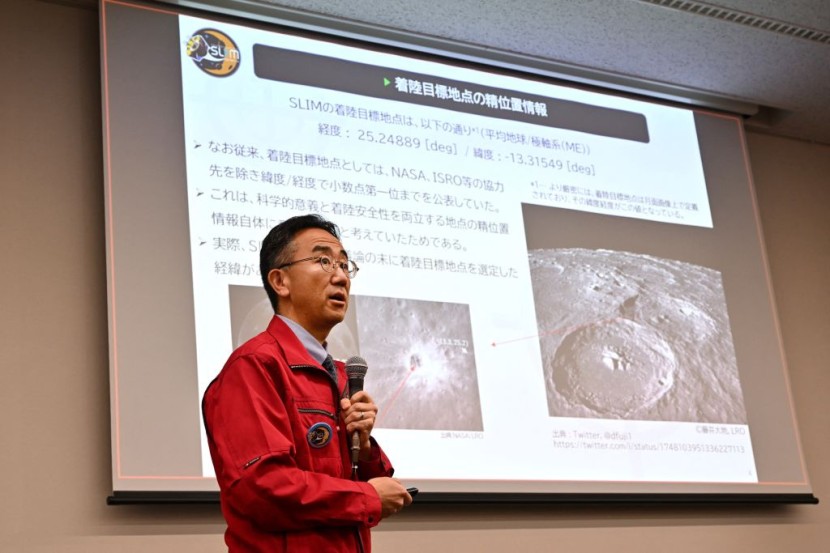Japan's SLIM moon lander, also known as Smart Lander for Investigating Moon, regains power a week after successfully landing on the lunar surface and will now conduct scientific operations.
On Sunday, the Japan Aerospace Exploration Agency (JAXA) was able to re-establish communication with its spacecraft. The loss of power was caused by the spacecraft running out of electricity due to its solar panels being at the wrong angle.
Japan's SLIM Regains Power

The Japanese spacecraft's touchdown on the moon's surface made the Asian nation the fifth country to successfully complete this kind of mission. JAXA said that the probe was likely able to generate power thanks to a sudden change in the sunlight's direction.
SLIM was able to resume its operations, which was to analyze the composition of olivine rocks on the lunar surface using its multi-band spectral camera. It will search for clues about the origin of the moon.
The Japanese spacecraft initially touched down on the moon within 55 meters of its target in a crater near the lunar equator on Jan. 20, 2024. The space agency said that it proved an advancement in what it called vision-based "pinpoint" landing, as per Reuters.
This is a type of technology that could become a powerful tool for future exploration of hilly moon poles that are seen as a possible source of fuel, water, and oxygen. The moon lander lost the thrust of one of its two main engines shortly before touchdown due to unknown reasons. It ended up drifting a few dozen meters away from its target.
Fortunately, the lander safely stopped on a gentle slope but appeared toppled with an engine facing upward in a picture that was taken by a baseball-sized wheeled rover that it deployed. The solar panels of the spacecraft face westward due to the displacement and could not immediately generate power for the moon lander.
JAXA decided to manually unplug SLIM's dying battery two hours and 37 minutes after touchdown. This is because it had already completed the transmission of the lander's data to Earth.
Scientific Operations on the Lunar Surface
In the Japanese space agency's Monday announcement, it also revealed that SLIM, also nicknamed "moon sniper," was able to obtain its first light for 10-band observation. In a post on X, formerly known as Twitter, JAXA showed an image of a "toy poodle," a rock that was observed near the lander, according to The Guardian.
The area where the moon sniper targeted for landing was a crater where the moon's mantle is believed to be exposed on the surface. The successful mission comes after the Asian country's two failed attempts, one public and one private.
The Japanese moon lander touched down near a crater called Shioli, which is a Japanese female first name that is pronounced "she-oh-ee." It is located roughly 200 miles south of the Sea of Tranquility, which is the region that is near the lunar equator where Apollo 11 first landed humans on the moon.
A professor of planetary geology at Western University in Ontario, Dr. Gordon Osinski, said that he was excited to see that JAXA chose the area to be the landing site for its moon lander, according to CNN.
Related Article:
NASA Retires Mars Ingenuity Helicopter After Exceeding Expectations
© 2025 HNGN, All rights reserved. Do not reproduce without permission.








